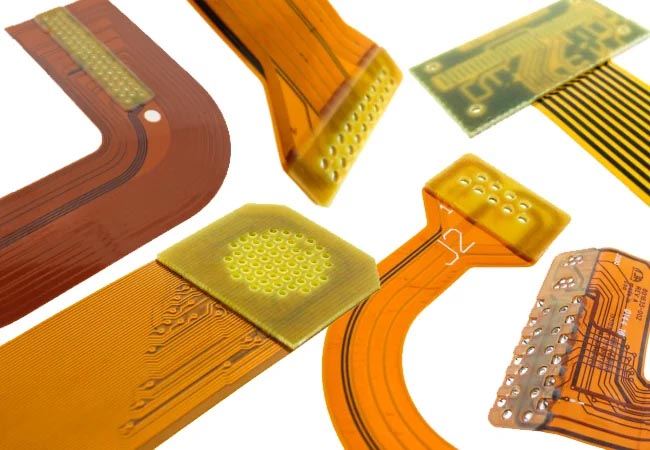About us
FASTPCBA Co.,Ltd
-
 Building 1, Senyang Electronic Technology Park, Guangming High-tech Park, Yutang Street, Guangming District, Shenzhen City.
Building 1, Senyang Electronic Technology Park, Guangming High-tech Park, Yutang Street, Guangming District, Shenzhen City.
-
 F:86-13418481618
F:86-13418481618
-
 pcba13@fastpcba.cn
pcba13@fastpcba.cn
 date:2021-01-26 15:02:18
date:2021-01-26 15:02:18
There are five main types of flexible circuit boards: from single-layer to multi-layer options, and can also include more rigid designs.

The following is a brief overview of the five main types of flexible circuit boards:
Single-sided flexible circuit board: This design includes a conductive copper layer that can be glued between two insulating layers, or consists of a polyimide insulating layer and a bare side. The internal copper layer then undergoes a chemical etching process to produce a circuit design. Single-sided flexible PCB board design support includes components, connectors, pins and reinforcements.
Single-sided flexible circuit boards with dual channels: Some single-sided flexible printed circuit boards have dual access designs that allow you to access conductive materials from both sides of the circuit. This design feature requires a flexible PCB and dedicated layers to create a via for a single copper layer through the polyimide layer of the substrate.
Double-sided flexible circuit board: The double-sided flexible circuit board has two conductive layers with a polyimide insulating layer in between. The outer side of the conductive layer may be exposed or have a covering, such as a copper pad. The layers are usually connected by plated through holes, but other methods can also be used. Similar to single-sided flexible circuit boards, double-sided flexible printed circuit boards can support additional components such as pins, connectors, and reinforcements.
Multi-layer flexible circuit board: beyond single-sided and double-sided flexible PCB board is a multi-layer flexible circuit board. These circuit boards combine multiple single-sided and double-sided circuits, connecting three or more flexible conductive layers with an insulating layer between each. The outer layer of these units usually has a cover layer, and copper-plated through holes usually run through the entire thickness of these flexible circuits. Multilayer flexible circuit board is the best solution to solve the requirements of crossover, crosstalk, impedance and shielding. There are multiple design options for multilayer circuit boards-for example, like FR4, blind and buried vias can be used to build multilayer flexible boards. In addition, the layers of a multilayer circuit may be laminated continuously to increase protection, but if flexibility is the highest priority, this step is usually skipped.
Rigid-flex circuit board: The design of the rigid-flex circuit board is slightly different from the ones listed above, and its cost is often higher than other flexible PCB options, but their use is similar to most other PCBs. These models tend to use two or more conductive layers, but the insulating material sandwiching each conductive element can be a rigid or flexible insulator. They are different from multilayer circuits because they have conductors on a rigid layer, which provide greater strength than similar units that rely only on stiffeners. This makes rigid-flex circuits particularly popular in the military and aerospace industries.
 Building 1, Senyang Electronic Technology Park, Guangming High-tech Park, Yutang Street, Guangming District, Shenzhen City.
Building 1, Senyang Electronic Technology Park, Guangming High-tech Park, Yutang Street, Guangming District, Shenzhen City.
 F:86-13418481618
F:86-13418481618
 pcba13@fastpcba.cn
pcba13@fastpcba.cn